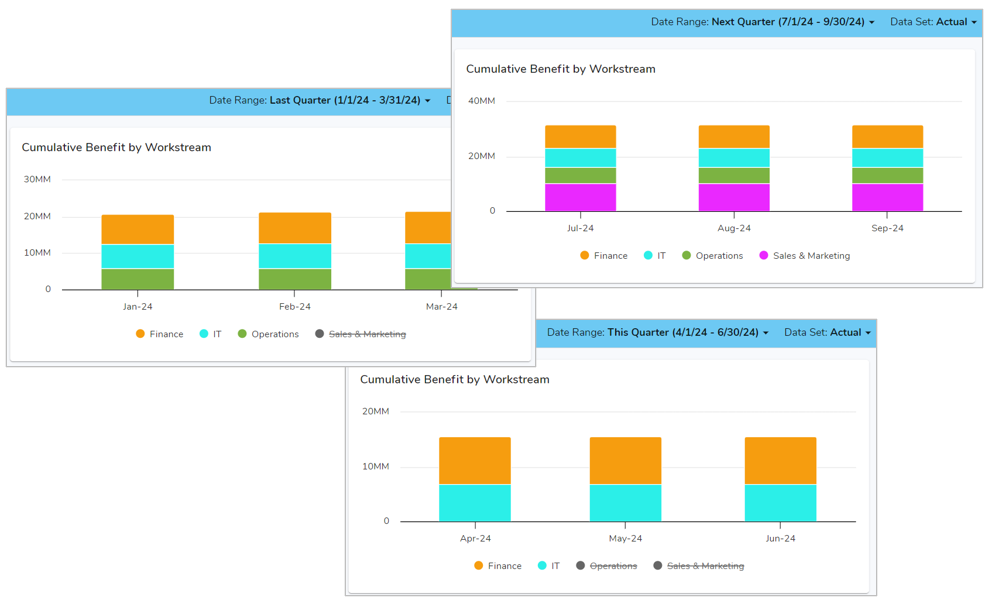Overview
Welcome to the latest edition of the Shibumi newsletter! This month, we’re thrilled to introduce two significant updates: the Metric Timeframe Chart and the expansion of Business Rules to incorporate roles held on Associated Work Items. These enhancements promise to streamline data analysis and optimize workflow management within the Shibumi platform. Let’s delve into the details!
Metric Timeframe Chart
The new Chart section is a performant, easy-to-configure chart that has been designed to dynamically respond to Page Filters. As a first iteration, the Chart section can be configured from a Metric Timeframe which displays metric data over a period of time. The Metric Timeframe Chart can currently be configured as a Column, Line, Stacked Column, as well as combinations of Column & Line and Stacked Column & Line.
The Shibumi team is incredibly excited to provide this new section to our users, enabling proactive decision making and visualizing performance trends. By presenting metric data in a visually engaging format, Shibumi empowers decision-makers to stay ahead of the curve. Whether it’s tracking weekly sales figures, monitoring monthly KPIs, or analyzing quarterly revenue trends, the Metric Timeframe Chart helps users spot patters, identify anomalies, and gauge progress effortlessly.
In creating the new Chart section, the Shibumi team made configuration intuitive. As a result, setting up a new Metric Timeframe Chart is exceptionally easy and straightforward.
A key benefit of the new Metric Timeframe Chart is it can be seamlessly configured with Page Filters to dynamically define multiple aspects of the metric data being displayed. For example, a Metric Timeframe Chart has been configured to display the Monthly Cumulative Benefit of Initiatives sliced by their Workstream. By having the timeframe of the Chart configured with a Data Range Page Filters, users can dynamically change the timeframe of the section!
And this is just the beginning! Stay tuned for mor exciting enhancements on the horizon. For more details, please visit our Metric Timeframe Chart support site article.

Business Rules and Associated Work Items
We’ve enhanced your ability to collaborate on associated work items by introducing Business Rules to manage role assignments and to send notifications. Previously, the Assign Role business rule action was limited to assigning roles solely on the current or ancestor work items. Similarly, the Send Notification action could only dispatch notifications to users holding roles within the current or ancestor work items. With our latest improvements, Business Rules can now both send notifications and assign roles on associated work items, broadening the team of people able to ensure the success of an Initiative.

For more information please review the following support site articles:
